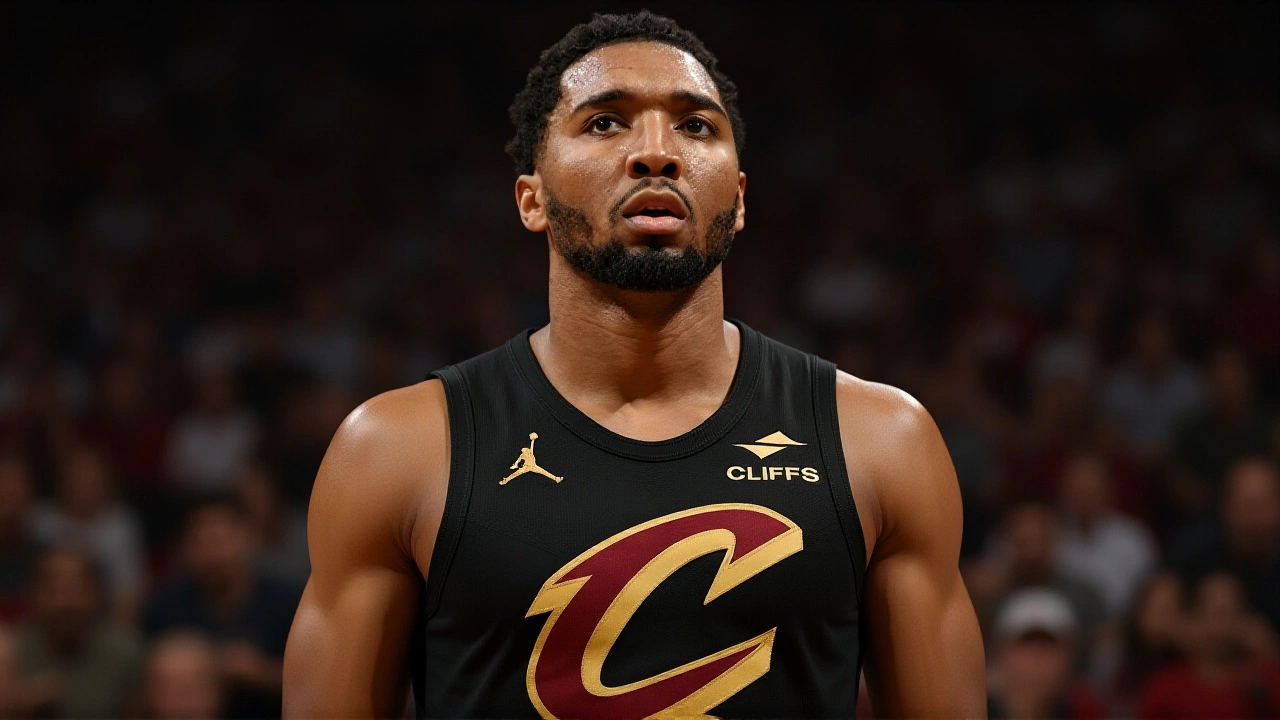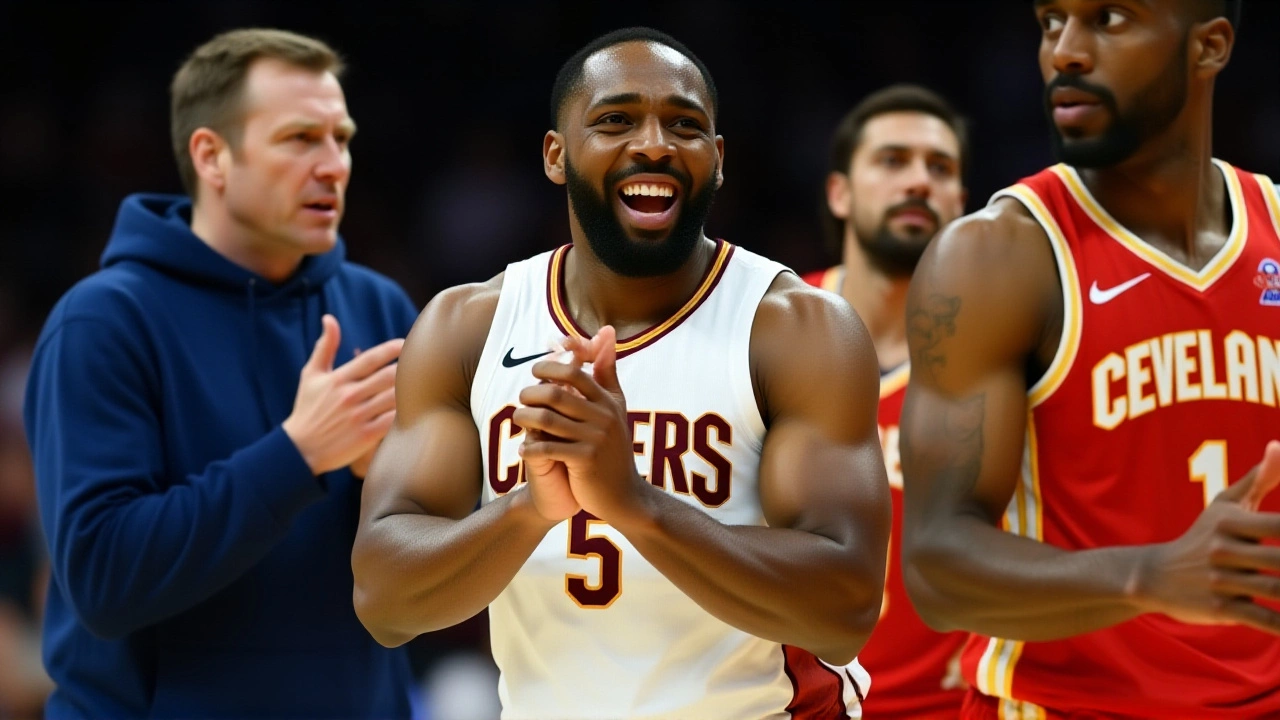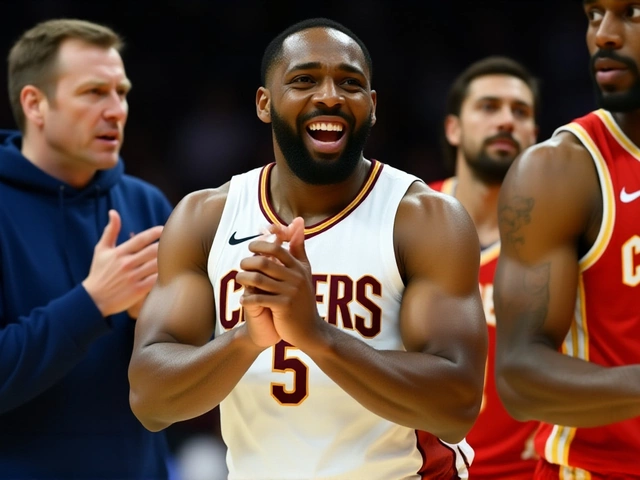When the Cleveland Cavaliers tipped off against the Toronto Raptors at Scotiabank Arena on November 24, 2025, they didn’t just face a tough opponent—they faced a season-defining crisis. Seven players were officially out, one was questionable, and the roster looked more like a G-League lineup than an NBA contender. The result? A 110-99 loss that exposed just how thin their bench had become—and how reliant they’d been on health all season.
The Injury Avalanche
The Cleveland Cavaliers entered the game without seven key contributors. Jarrett Allen, the 26-year-old All-Star center, sat out for the third straight game with a right third finger strain. Darius Garland, their dynamic 24-year-old point guard and 2022 All-Star, was ruled out under injury management protocols. Even De'Andre Hunter, usually a reliable wing, was given a night off for rest. The list grew: Craig Porter Jr. (left knee meniscus surgery or hamstring issue), Max Strus (left foot Jones fracture), Sam Merrill (wrist sprain), and Taurean Prince (neck surgery) were all sidelined. Only Dean Wade, questionable with right knee hyperextension, held out a sliver of hope.
It wasn’t just numbers—it was role. Allen anchored the paint. Garland orchestrated the offense. Strus was their best three-point shooter. Prince brought veteran poise. Losing them all? That’s not bad luck. That’s a collapse.
Toronto’s Depth Shines
Meanwhile, the Toronto Raptors were rolling. Even without RJ Barrett (right knee sprain), they had more than enough. Brandon Ingram exploded for 37 points—15 of them in the third quarter alone—as if the Cavaliers’ depleted defense were a training drill. Scottie Barnes, the 2022 Rookie of the Year, added a double-double: 18 points, 11 rebounds. Sandro Mamukelashvili chipped in 12 off the bench. Immanuel Quickley and Jakob Poeltl (13 rebounds) made sure the Raptors controlled the tempo and the glass.
The Raptors didn’t just win—they dominated the narrative. A 13-2 run to close the first half turned a tight game into a lead they never relinquished. Cleveland’s offense? Stagnant. Lonzo Ball went 3-of-15 from deep. Donovan Mitchell, their only consistent star, managed 17 points on 6-of-20 shooting. Evan Mobley and Nae’Qwan Brown each scored 14, but it wasn’t enough.
The Bigger Picture
This wasn’t just another loss. It was a warning sign. The Cleveland Cavaliers are now 12-7, slipping out of the top tier in the East. Their injury list reads like a medical textbook. And with Dean Wade still questionable, they’re heading into Atlanta on November 28 without full strength.
For the Toronto Raptors, it was validation. They improved to 13-5, riding a 12-1 streak over their last 13 games. This was their first season sweep over Cleveland since 2019-20. The message? Toronto isn’t just surviving without Barrett—they’re thriving with depth, balance, and execution.
And here’s the twist: Cleveland’s problems aren’t just physical. They’re psychological. When your best players are out, and your backups aren’t ready, confidence crumbles. Ball’s 3-of-15 night? That’s not just bad shooting. That’s the weight of expectation crushing a player who’s been asked to do too much.

What’s Next?
The Raptors face the Indiana Pacers on November 26 at Scotiabank Arena. With their momentum and depth, they’re looking like genuine title contenders. The Cavaliers, meanwhile, head to Atlanta with a roster that looks more like a placeholder than a playoff team. If Wade can’t play Friday, they’ll need someone—anyone—to step up. Otherwise, their playoff hopes might not survive December.
Behind the Numbers
Let’s break down what this loss really means:
- Seven players out: The most since the 2020 pandemic-shortened season for Cleveland.
- 12-1 record over last 13 games for Toronto: Best in the Eastern Conference.
- Brandon Ingram’s 37 points: His highest this season, and the most by a Raptor since Pascal Siakam dropped 40 in March 2024.
- Only 31 total points from Cleveland’s bench: The lowest output of the season.
- 13-2 run to end the first half: The Raptors’ signature move this year—when they’re healthy, they close quarters like a closing bell.
Frequently Asked Questions
How bad is Cleveland’s injury situation compared to other NBA teams this season?
Cleveland’s seven absences on November 24 were the most in the NBA that week and the highest single-game total for the franchise since 2020. Only the Portland Trail Blazers (eight out in early December 2024) had a worse stretch. But unlike Portland, Cleveland lacks depth in their second unit, making their situation far more dangerous to their playoff chances.
Why did Toronto win so convincingly despite missing RJ Barrett?
Toronto’s depth is their strength. With Brandon Ingram stepping into a lead role, Scottie Barnes playing all five positions effectively, and bench contributors like Mamukelashvili and Quickley delivering, they didn’t need Barrett. Their system is built around multiple playmakers, not one star. Cleveland, by contrast, still leans too heavily on Mitchell and Garland.
Is Dean Wade likely to play against Atlanta?
It’s uncertain. Wade was listed as questionable with right knee hyperextension, and the Cavaliers have only two days between games. His mobility is critical for spacing and switching on defense. If he’s out, Cleveland’s frontcourt will be even thinner, forcing Evan Mobley to play more minutes—increasing his injury risk.
What does this loss mean for Cleveland’s playoff chances?
It’s a major setback. With a 12-7 record, they’re currently seventh in the East, but the gap between 6th and 10th is razor-thin. If they can’t get Allen and Garland back by mid-December, and if their bench continues to struggle, they could slip out of the play-in picture entirely. Health, not talent, is now their biggest obstacle.
Has Toronto ever been this deep before?
Not in the last decade. Since the 2019 Finals run, Toronto’s roster has been defined by rebuilding. This year’s team—led by Ingram, Barnes, Quickley, and Poeltl—has the most balanced scoring and defensive versatility since the Kawhi Leonard era. Their 12-1 streak is their best 13-game stretch since 2019.
What’s the long-term impact of these injuries on Cleveland’s roster?
Long-term, this could force a trade deadline reckoning. If Allen, Garland, and Strus miss significant time, Cleveland may look to offload underperforming veterans for future picks. They’ve already shown they’re not comfortable with their current depth. This stretch could be the catalyst for a reset—even if it means sacrificing short-term contention.

